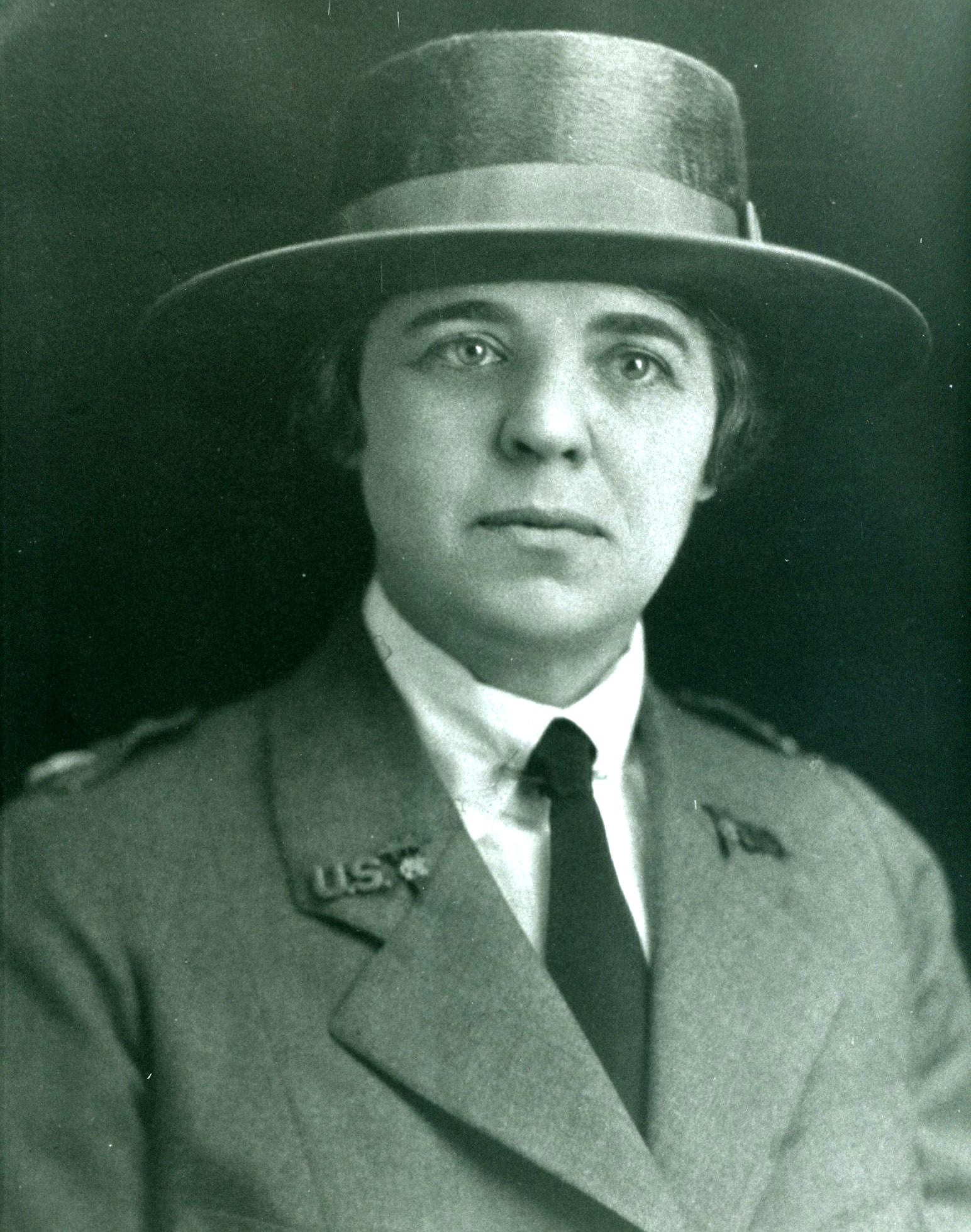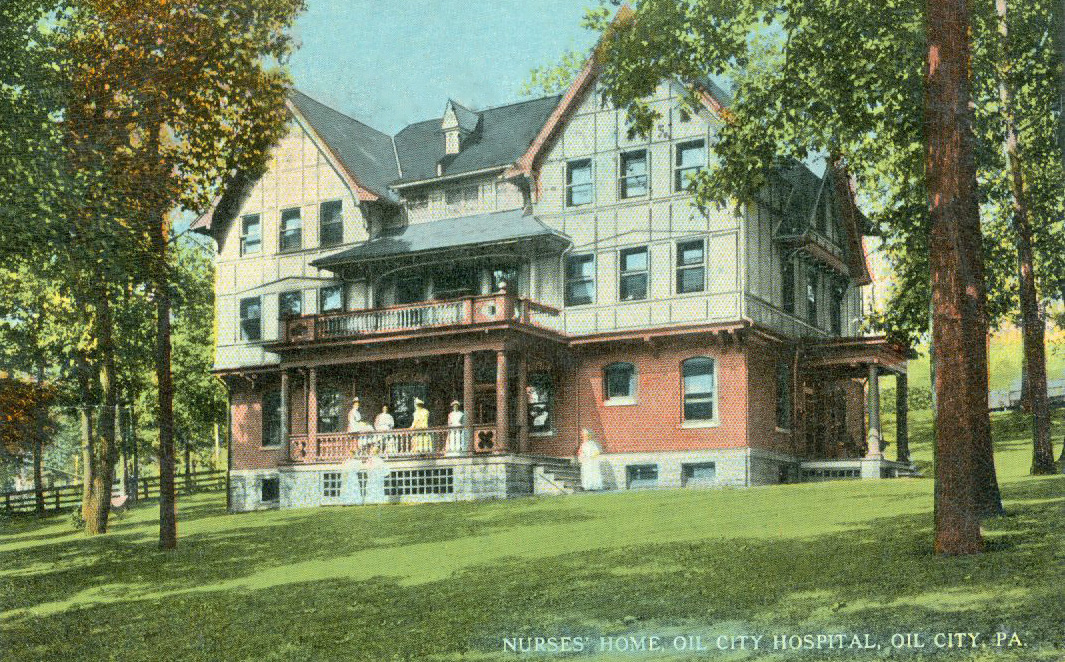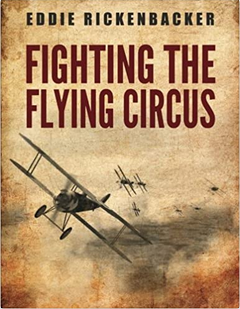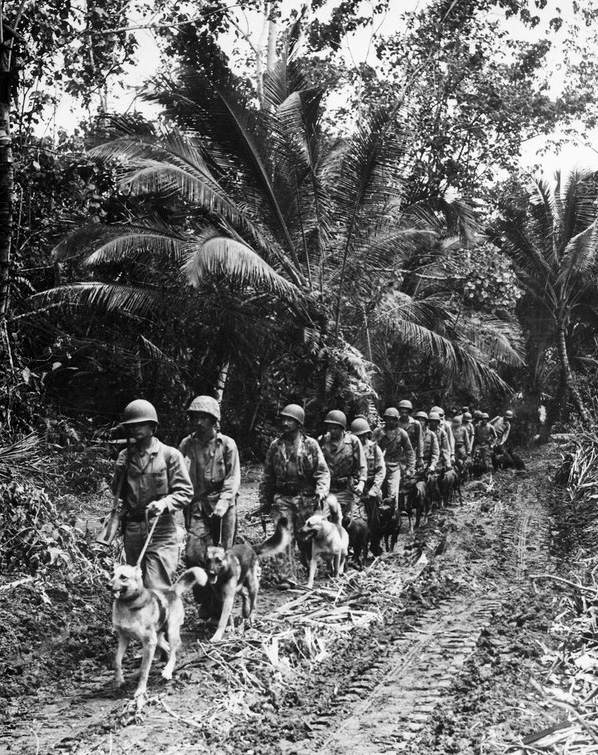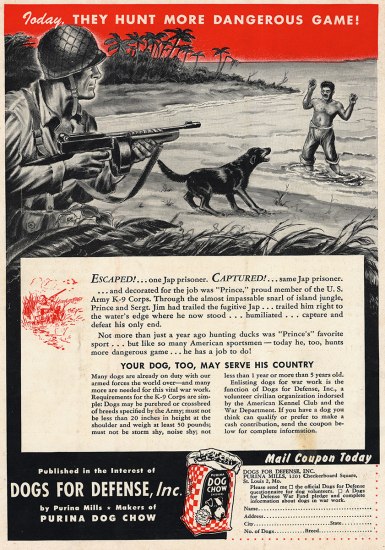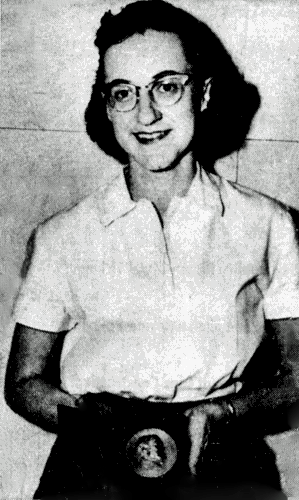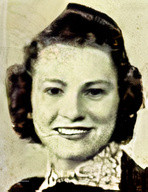Female Heroes
- Judy Etzel
- August 18, 2023
- Hidden Heritage
- 15076
Many Oil City women have left their marks on the nation’s history.
Two city women – Lois Brundred and Elizabeth Reid – served the country as health professionals overseas in World War II.
A pair of city women – Helen Weaver Oxenham and Ruth Crawford Culver – were honored by a national organization for their bravery in saving a young Oil City boy.
Elizabeth Dunbar Reid
Elizabeth Reid, daughter of Scottish stonemason David Reid and his wife Isabella McKee Reid, grew up on Washington Avenue in Oil City and graduated in 1905 from the Oil City Hospital School of Nursing.
In 1906, she signed up as a nurse with the U.S. Army Nurses Corps. After serving at Army hospital posts across the U.S., Elizabeth was assigned to Hong Kong and the Philippines. She was chief nurse at Walter Reed Hospital in Washington D.C., and at the Field Hospital serving the U.S. Expeditionary Forces at Vera Cruz, Mexico.
In October 1918, she became assistant superintendent at the office of the U.S. Surgeon General in Washington. However, she soon declared that she would rather use her nursing skills and asked to be returned to active Army nurse duty. After working at Army hospitals in South Carolina and Colorado, Elizabeth was deployed to Coblentz, Germany, in 1920, to serve with the U.S. Army of Occupation.
For the next two years, she organized a hospital system there for U.S. soldiers who were too badly wounded in the war to be brought home. She was promoted to captain during that time.
Back in the U.S. in 1922, Elizabeth was named principal chief nurse at Walter Reed Hospital. She refreshed her education at Columbia University and led efforts at the hospital to use occupational therapy as a tool for rehabilitation.
Later assignments were to hospitals in Texas and California. Elizabeth retired in October 1935 at which time she had the second highest rank – assistant superintendent – in the Army Nurses Corps. She was the senior ranking captain of the three nurses holding that rank in the corps.
While highly decorated and esteemed in the U.S. Army, Elizabeth was also recognized by the French government that awarded her the Medaille d’ Honneur des Epidemies for “unlimited devotion and a remarkable professional skill during the epidemic of influenza among French soldiers in the Army of the Rhine in the spring of 1921.”
She died in March 1936, one year after retiring. A new nurses quarters at the Army Hospital in Fort Sam Houston, Texas, was named Reid Hall in her memory.
Lois Zoe Brundred
Lois Brundred was born December 24, 1889, in Oil City. She was one of seven children born to Benjamin F. Brundred, a well-known oilman, and Elizabeth Dilworth Loomis Brundred. The family resided at 315 West First Street and were members of Christ Episcopal Church.
In 1908, she graduated from the Ogontz School for Young Ladies near Philadelphia. Active in her school, Lois served as president of the Class of 1908 and was captain of the school’s basketball team. Shortly after World War I began, Lois signed up in 1917 as a volunteer with the first American Red Cross unit to sail for France. She served there as a field nurse until early summer 1918 when she was gassed.
After recuperating, she was assigned to the Army Aviation Corps under General William “Billy” Mitchell who commanded flying ace Capt. Eddie Rickenbacker.
Rickenbacker told Brundred “your efforts will always be appreciated … for your war record cannot be forgotten.”
Lois was made an honorary member of the “Hat in the Ring” Squadron. News accounts relate that she was “constantly at the front throughout 1918” until being sent to Coblentz to serve with the U.S. Army of Occupation.
After nearly two years overseas, Lois returned to Oil City in the spring of 1919. She and her friend, Wilhelmina Tenney of Honolulu, bought a ranch in Chula Vista, California. After Miss Tenney moved back to Hawaii, Joan Michler of Greenwich, CT, and her mother joined Lois on the ranch.
During World War II, Joan and Lois became active in the San Diego chapter of the Red Cross and operated the Dogs for Defense project there. They tested more than 1,600 dogs for military and humanitarian services.
Their experience spawned a new business of breeding German Shepherd dogs and establishing the San Miguel German Shepherd Kennels at their ranch. The dogs were trained for the armed forces and as seeing-eye dogs.
Lois died in July 1973. Among her survivors was H. Doughlas Brown, Jr. of Oil City.
Helen Weaver Oxenham & Ruth C. Culver
Two Oil City women were honored by the Carnegie Hero Fund Commission in 1955 for their heroism in rescuing a young boy from drowning a year earlier in the frozen Allegheny River.
Early in the evening of January 21, 1954, eight-year-old Robert Hadley of West Third Street and two pals, John Barnes and Michael McCarthy, wandered onto the ice covering the Allegheny River at the bottom of Innis Street. Robert slipped off the outer edge of the ice and fell into cold water that was seven feet deep. The air temperature was 17 degrees.
His companions reached the river bank safely and immediately began screaming for help. Ruth Crawford Culver, 35, a homemaker and mother of four, heard the screams and ran to the riverbank. She found Hadley struggling in water and trapped by floating ice several inches thick.
The Carnegie report noted Culver jumped into the river and tried to push the Hadley boy towards the river bank. At the same time, Helen Weaver, 18, a neighbor, arrived at the scene and plunged into the water and grabbed Hadley’s trousers. As both women struggled to get the youngster to the shoreline, Walter Weaver, Helen’s father, arrived at the scene. He lay down near the river edge, pulled Culver out of the water and then recovered his daughter who was still holding on to the Hadley boy.
City police were quickly on the scene and wrapped the rescuers in heavy coats. None of the three required medical attention and all recovered.
Weaver, a 1953 Oil City High School graduate, was also given the LaCroix Award from the General Telephone Company where she worked. The award was the first of the company’s coveted LaCroix Awards designed to recognize heroic actions by their employees.
Ruth Culver and her family eventually moved to Parma Heights, Ohio.
Helen married Stuart J. Oxenham in 1958 and they had four children.
She worked at the telephone company and later for the Oil City Area School District where she retired in 1998 as an administrative secretary. Helen, a talented artist, died in 2009.
Written by Judy Etzel with research by Kay Dawson and design by Natalie Cubbon.
HIDDEN HERITAGE IS SPONSORED BY:
Helen & Dave Heinzer
Support This Project
Donations to the library are appreciated to help offset printing costs & make this project possible! Want to become a sponsor? Email us at promotions@oilregionlibraries.org to get started!
Make a Donation
